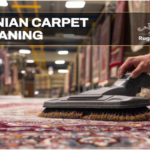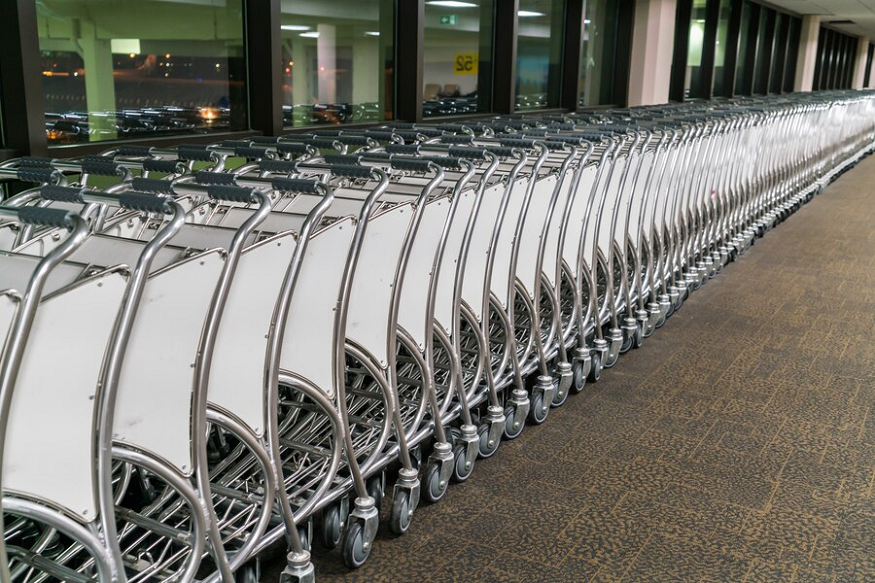Shopping carts are among the most frequently used assets in retail environments, from grocery stores to big-box chains. But with constant use comes inevitable wear and tear. Rather than spending thousands on replacing entire fleets, many retailers turn to a more cost-effective and eco-friendly solution: shopping cart refurbishment.
Refurbishing shopping carts extends their lifespan and improves safety, aesthetics, and customer satisfaction. Let’s look at how the shopping cart refurbishment process works and why it’s brilliant for today’s retail businesses.
Why Refurbishment Matters
Before we break down the process, it’s important to understand why refurbishment is such a valuable investment.
- Cost Savings: Refurbishing a cart costs 40–60% less than buying a new one. Considering that a new cart costs between $100 and $300 each, the savings add up fast, especially for stores that manage hundreds of units.
- Sustainability: Refurbishment helps reduce waste. In fact, refurbishing carts can divert thousands of pounds of metal and plastic from landfills each year.
- Customer Experience: Clean, smooth-rolling carts enhance the shopping experience. When carts are well-maintained and easy to use, shoppers are less likely to abandon their visit.
- Safety & Compliance: Refurbished carts can be updated to meet current safety standards, including ADA accessibility and child restraint systems.
Now, let’s get into the step-by-step process.
Step 1: Cart Collection and Inspection
The refurbishment process begins with collecting damaged or worn carts from the store. The first step is a detailed inspection, whether this is done internally or through a third-party service.
Technicians examine each cart for structural integrity, including:
- Bent frames
- Damaged wheels
- Rust or corrosion
- Broken handles or child seats
- Loose or missing components
The carts are then sorted. Some are tagged for complete refurbishment, while others may be stripped for parts if they’re beyond repair.
Step 2: Disassembly
To thoroughly refurbish each cart, they must be disassembled. This includes removing wheels, axles, handles, plastic seats, and corner bumpers. Disassembly allows for detailed cleaning and ensures that each part can be repaired or replaced.
All reusable parts are saved and evaluated. Components that are worn beyond safe use are discarded or recycled.
Step 3: Deep Cleaning
Once disassembled, all parts undergo an industrial-strength cleaning process. This involves removing built-up grime, grease, rust, and debris from years of use.
Standard cleaning methods include:
- Pressure washing
- Industrial degreasers
- Rust-removal treatments for metal components
- Sanitation of plastic seats and handles
This step ensures that the carts are not only visually appealing but also hygienic—especially important for carts that include child seats.
Step 4: Repair and Replacement of Parts
After cleaning, it’s time for repairs. Skilled technicians repair bent or weakened metal frames using heat and straightening tools. In some cases, they may weld or reinforce joints for added strength.
Any broken or missing parts are replaced with new components, such as:
- Caster wheels
- Bearings
- Axles
- Plastic seats
- Handle grips
- Bumpers
High-quality replacement parts ensure that refurbished carts function like new ones and comply with safety standards.
Step 5: Painting and Coating
One of the most noticeable transformations comes from repainting or powder coating the cart frames. Over time, original finishes can become chipped, faded, or rusty. A fresh coat of paint or powder finish improves appearance and protects the metal from corrosion.
Some refurbishment companies offer custom colors or branding to match the retailer’s theme. Anti-rust coatings and weather-resistant finishes are also commonly applied to prolong the cart’s life.
Step 6: Reassembly
The carts are reassembled once all parts are cleaned, repaired, and painted. Technicians carefully piece together each component, ensuring everything fits securely and functions smoothly.
Reassembly includes:
- Mounting new or refurbished wheels
- Reinstalling seats, handles, and accessories
- Rechecking for structural stability and alignment
Every cart undergoes a functional test to verify that it rolls straight, brakes properly (if applicable), and meets overall safety standards.
Step 7: Final Quality Check and Delivery
The final step in the shopping cart refurbishment process is quality control. Each cart is inspected to meet the original specifications and retailer requirements.
Common quality control checks include:
- Wheel performance
- Load-bearing capacity
- Smooth-rolling and maneuverability
- Aesthetic presentation
- Proper installation of safety features
Once approved, the refurbished carts are returned to the store looking and functioning like new.
Why Retailers Choose Refurbishment
Many retailers are now including refurbishment in their long-term asset management strategies. Instead of cycling through expensive replacements every few years, stores can refurbish carts on a rotating schedule to maintain a consistent and professional fleet.
According to industry data, retailers regularly refurbish carts and see a 30% reduction in replacement costs over five years, improving customer satisfaction and lowering liability risks.
Final Thoughts
The shopping cart refurbishment process is more than a quick fix. It’s a detailed, strategic way to extend the life of your retail equipment while supporting a safer, cleaner shopping environment.
With rising retail operations costs, smart businesses are turning to refurbishment as a cost-effective, eco-friendly solution that doesn’t compromise on quality or safety. Whether you manage a single store or a multi-location chain, investing in cart refurbishment can keep your operations rolling smoothly for years.










